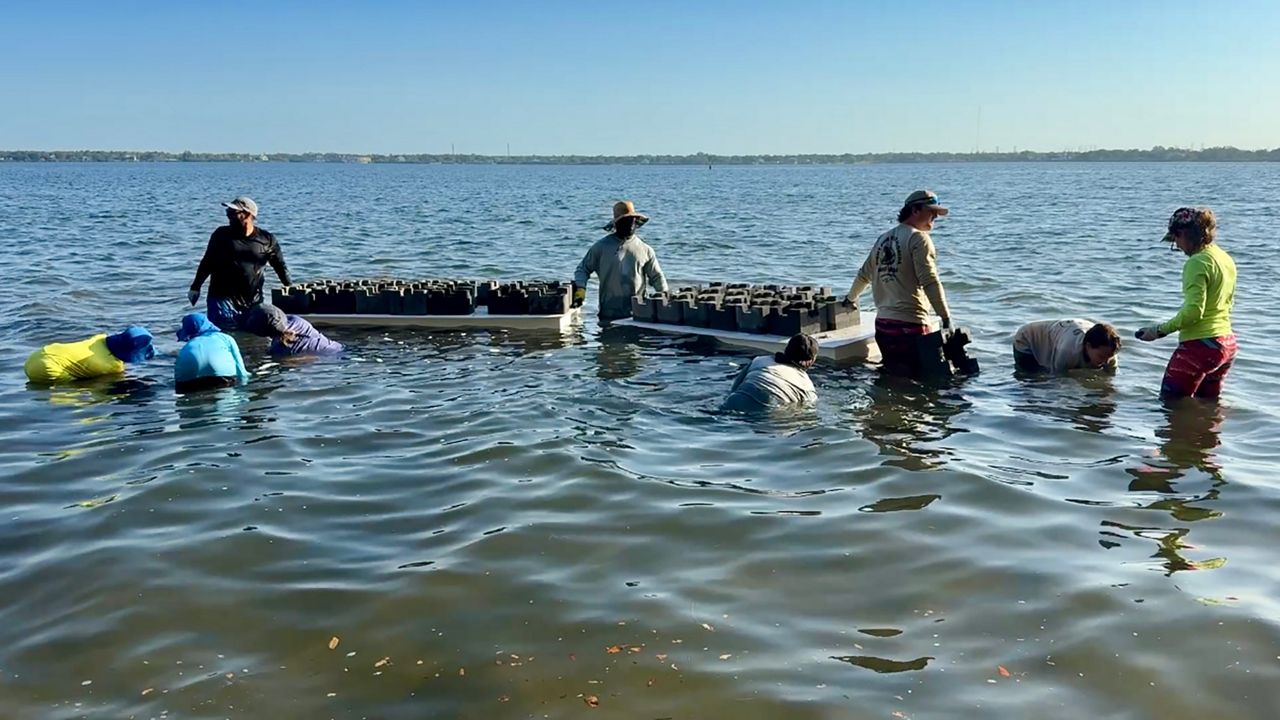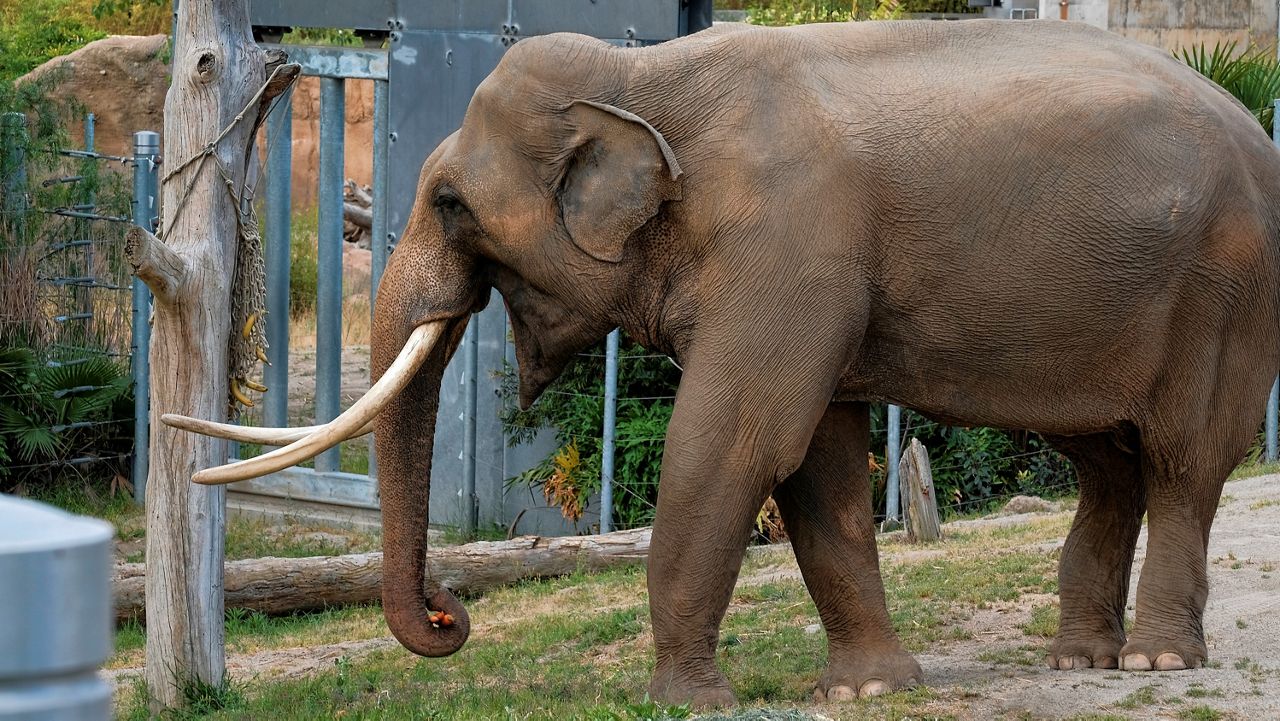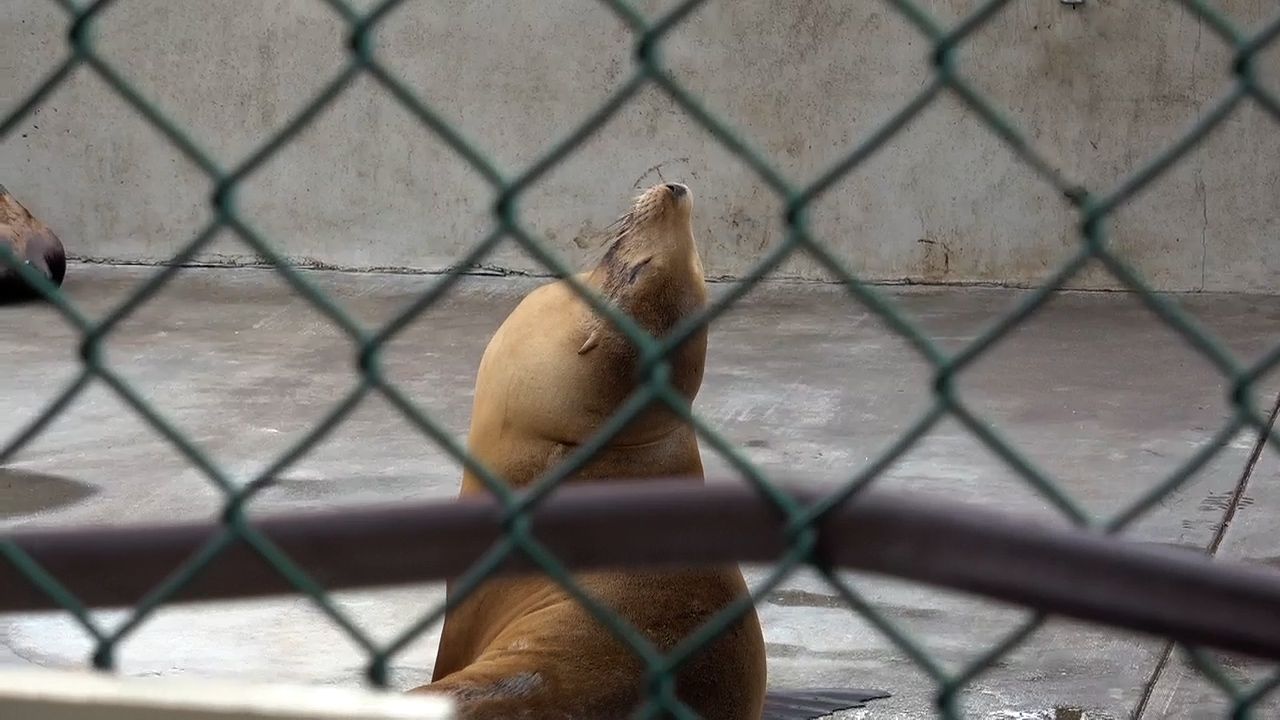Year-round oysters are becoming a thing. With increased farming and a little bit of science, we can enjoy them every day of the year.
Oyster season is from October through March, where wild oysters are no longer spawning and can be harvested
Oyster farmers are able to harvest oysters year-round because they can control the lifespan and spawning of their oysters
Oyster farming has many benefits including ecological and economical benefits
Cody Faison is an oyster farmer and co-owner of the Ghost Fleet Oyster Company, and the world is, quite literally, his oyster.

“We don’t harvest wild oysters, we farm oysters,” Faison said, “So we can harvest oysters 12 months out of the year as long as the waters are open.”
Oyster farming has been growing in popularity over the years. Farmers have learned how to control the conditions that oysters grow in, from the size to the lifespan and even the flavor.
“We farm our oysters between the Intracoastal Waterway and Topsail Beach and the marsh plays a big role in how our oysters taste, the kind of oysters that we’re growing,” Faison said. “The term for that is merroir, and it’s the conditions, the environmental conditions that are affecting how our oysters taste, so our oysters grown in this portion of the marsh might be slightly different than the next farmer's.”
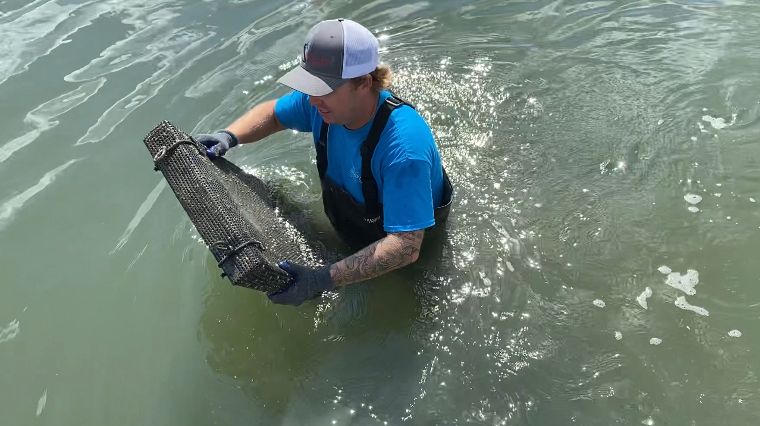
Ghost Fleet is a family business, born out of a love for oysters.
“What got us into oyster farming was just a pure love for oysters,” Faison said. “Ghost Fleet Oyster Company is owned by Rachel and myself. She’s a scientist by education and trade so she’s really the brains behind all the scientific stuff that’s out here. I’m more of the hands-on, blue-collar guy that gets a little dirty.”
The sustainability factor is attractive to the Faisons as well.
“This is a reef, it’s become sort of a self sustaining ecosystem. Here we get tons of bait fish, little crabs, blue crabs, stone crabs, fighter crabs — we have all sorts of crabs hanging out. We have all sorts of other filter feeders that are here on the farm, as well,” Faison said. “It’s an amazing ecosystem that it’s not an intentional thing at the very beginning but it really does turn into something that, as a farmer, is incredible to watch. So you’re not only cleaning the water, but you’re providing a tremendous habitat for animals.”
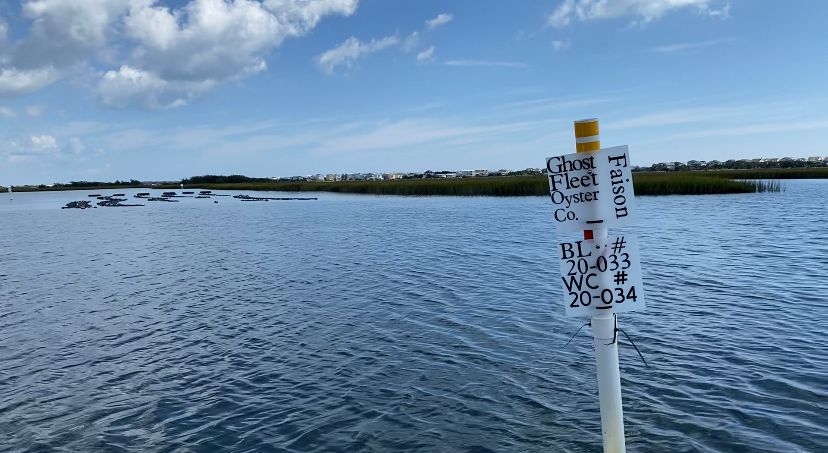
What’s good for the animals is also good for North Carolina.
“Overall, the industry as a whole is growing, we’re expanding, we’re providing jobs to local economies,” Faison said. “Just in our area, there are several farmers that are all small, family-owned operations, that are playing their small part.”
And while many people are taking this week to celebrate oysters and the start of the wild oyster season, Faison celebrates every day.
“We just love oysters and it makes it easy to be an oyster farmer,” Faison said. “It’s not hard to come to work every day. It’s a beautiful office, and even when it’s bad, it’s still good.”
Wild oyster season started on the 15th and will continue through March.
The North Carolina Oyster Festival is going on all weekend at Mulberry Park in Brunswick County.
If you’d like to learn more about the Ghost Fleet Oyster Company, you can check out their website and even schedule a tour of the farm.







